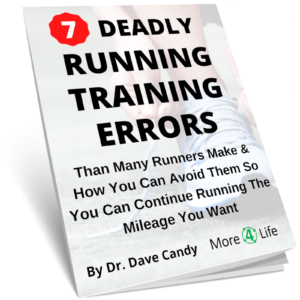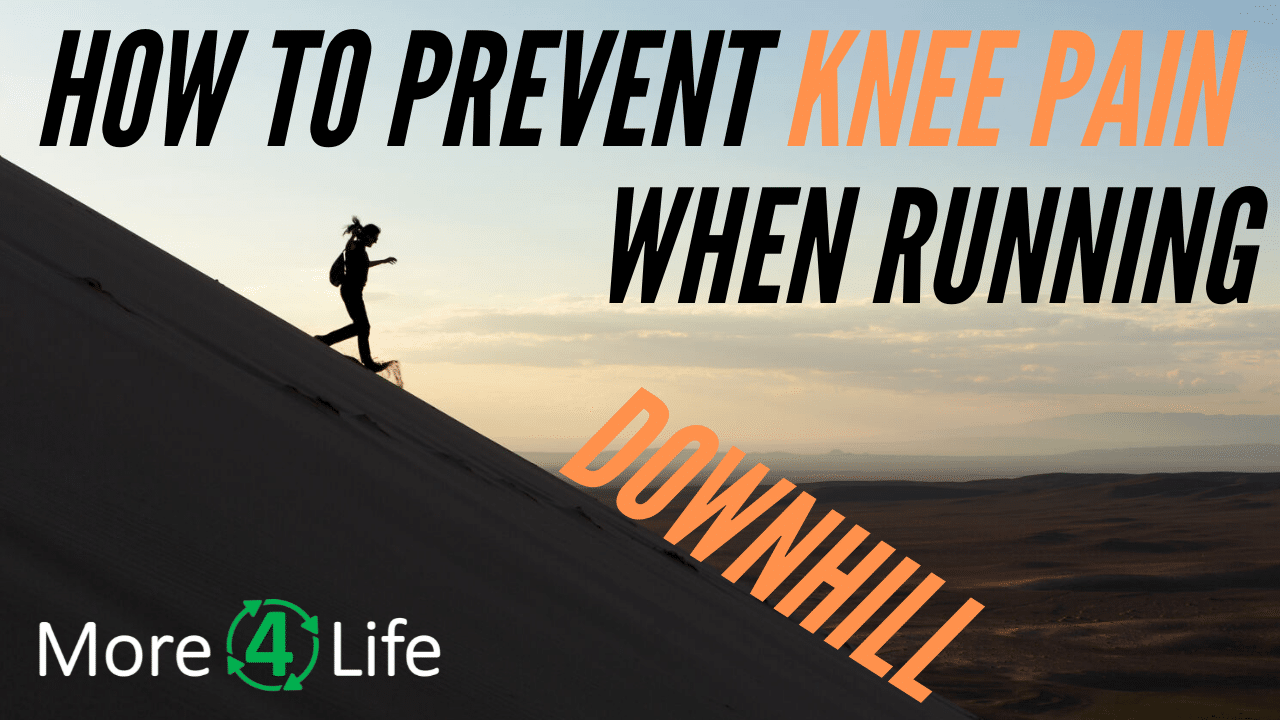Do You Get Knee Pain When Running Downhill?
Many runners complain about pain when running downhill. You might think running downhill should be easier than running uphill, but if you run, you probably realize that's not the case.
Watch the video to learn how to prevent knee pain when running downhill

What Knee Pain When Running Downhill?
There are many different things that can cause knee pain when running. However, for the purposes of this post, I'm going to assume that you ONLY get knee pain when running downhill and that you don't get knee pain when running uphill or on flat ground.
The most common causes of knee pain when running downhill are:
- Patellofemoral joint pain
- Patellar tendonitis
Patellofemoral Pain When Running Downhill
Patellofemoral pain basically means pain on the front of the knee caused by compression of back of the kneecap (patella) against the thigh bone (femur).
As you can see from the image above, the patella sits inside the quadriceps tendon and patellar tendon. If you have stiff quadricep muscles, there's more compression on the patellofemoral joint, particularly when you're running downhill and the quadriceps have to work hard to control your landing.
Alternatively, you may only get compression on the outer side of the kneecap if you have a stiff IT band, sometimes referred to as runner's knee.
Patellar Tendonitis Can Cause Knee Pain When Running Downhill
When you're running downhill, you're usually running faster than when running on flat ground or when running uphill.
Additionally, the vertical drop is higher when running downhill when running on flat ground.
Both of these factors can lead to greater ground reaction forces.
If you remember way back to your days of high school or college physics:
"For every action, there's an equal and opposite re-action"
What this means in terms of running is that when your foot hits the ground, it exerts a force downward on the ground.
The ground in turn, exerts an equal force upward against your foot.
This force is transmitted up your leg and has to be absorbed by either your muscles and/or joints.
When running downhill, your quadriceps muscles take the brunt of absorbing this force. The harder your quadriceps muscles work to absorb the force, the the greater the compression on your kneecap, and the more tension on your patellar tendon.
How To Prevent Knee Pain When Running Downhill
As noted above, your quadriceps muscles have to work hard when running downhill in order to slow your body down.
If you were just to run at full speed downhill, there would actually be less force on your quadriceps than when running slower because gravity is helping to keep your momentum going downhill.
It's scary running downhill at full speed though.
If you're running downhill. in a race, you may have other runners to look out for. If you're in your neighborhood running downhill, you have to watch out for bumps in the sidewalk, cross-traffic at intersections, curbs, dogs, children, and other walkers or runners.
You want to be careful enough that you don't trip and fall when running downhill.
However, if you run a little bit faster and lean into the downhill slant some rather than leaning back and trying to slow down as much, your quadriceps muscles won't have to work as hard. This in turn can help prevent knee pain when running downhill.
Stretch Your Calves
Another thing you can do to prevent knee pain when running down hill is to make sure you have adequate ankle and calf flexibility.
Since you're running faster with a longer stride length, your back foot has to be able to dorsiflex (shoelaces towards shin motion) more.
Inadequate calf flexibility can cause overpronation or flattening of the rear leg when running downhill, which can lead to pain on the inside or outside of the knee.
MOST runners know how to stretch their calves.
SOME runners actually do it on a regular basis.
FEW people (runners and non-runners alike) actually stretch their calves correctly.
Click here to learn how to stretch your calves correctly.
Need More Help For Knee Pain When Running?
Click the button below to request a Back To Running Evaluation
What Is The Back To Running Evaluation?
The Back To Running Evaluation includes:
- Running and Injury Review
- Training Plan Assessment
- Running Technique Analysis
- Strength & Flexibility Assessment
- Doctor's Report of Findings
- Therapeutic Recommendations to get you back to running quickly



